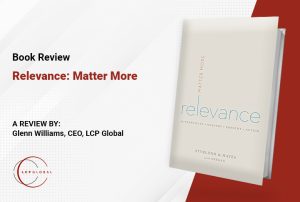As the world edges out of lockdowns, businesses are continuing to adapt to new working practices. Many teams may still be finding their feet in the new hybrid working environment where team members are more geographically dispersed with less opportunities for face-to-face contact.
Navigating and managing team dynamics is often difficult enough without the added challenges the pandemic has introduced. Many teams find themselves in gridlock, unable to collaboratively move in a unified direction toward the desired goal. Enthusiasm is quashed as momentum is railroaded by competing interests, conflicting priorities, or confusing objectives. As a result, innovation can take the back seat to the familiarity and stability of routine task accomplishment.
The need for aligned, collaborative, high performing teams hasn’t changed, and is perhaps even more important with a hybrid workforce. So how do you build resilient and adaptable teams when the norms of workplace practice are constantly changing?
By aligning the individual strengths and values of your team with a central shared vision and purpose.
In a recent blog, we explained how setting goals for leaders is an important roadmap to success. Of equal importance is how team goals are made. While it is necessary to outline tasks associated with achieving objectives, strategic team goal setting considers the degree to which these objectives are aligned – with the motivational drivers of each member, with the team’s purpose, and with the organization’s values and vision. As Reid Hoffman, Co-founder of LinkedIn points out,
How to set team goals for greater momentum
1. Invest in understanding your team’s motivational drivers
Motivation is a powerful driver when it comes to setting goals and taking steps to achieving them. It explains why people behave the way they do, and what some are willing to do when faced with an obstacle that gets in the way of success. Each team member’s motivation, and therefore their performance, is directly linked to their definition of success. Find out what drives the individuals on your team? What success means to you, may not be what it means to the other members of your team. Understanding what drives us, and our ability to discern the drivers of others, is key to increasing the capacity of teams to produce sustainable momentum.
Taking the time to understand the motivational drivers of your team will also help to identify ingrained or emerging conflicts. When the priorities of a team are in conflict, the team’s capacity is under stress. Identifying misalignment can be a catalyst for positive change as the limited resources of time and energy previously spent on managing the tension created by conflicting priorities can be directed toward team goals and objectives.
2. Get clarity of purpose and vision
While the changes brought about by Covid can create new obstacles, it can also provide opportunities for reflection and re-evaluation on an individual and team level.
“How has working from home impacted me?”
“Am I still engaged with my team and my organization even if I’m not physically connected?”
“How do I maintain focus and momentum in isolation?”
Momentum can stall when there is ambiguity of purpose. The change in working environments can be an invitation to clarify the purpose and direction of the team. Once we know what is important to us, why our team exists and what role we play in the success of the organization we are a part of, we can set team goals that are internally congruent and that are aligned with the values and vision of the organization. Whether working collaboratively in-person or remotely, when teams are unified around a clear shared vision that is personally and professionally meaningful, people can leverage their individual strengths for the benefit of the team.
What’s the bottom line?
In a hybrid working world where team members are working more remotely, strategically aligning team goals with the motivational drivers of its members and with the vision of the organization, builds resilient, high-performing teams that produce sustainable momentum even in the midst of change.
1 Hoffman, R., Casnocha, B., & Yeh, C. (2014). The Alliance: Managing Talent in the Networked Age, Harvard Business Review Press, p.42.



